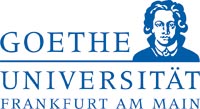COVID-19 research: Anti-viral strategy with double effect – Possible Achilles’ heel of SARS-CoV-2 virus identified

In the case of an infection, the SARS-CoV-2 virus must overcome various defense mechanisms of the human body, including its non-specific or innate immune defense.
During this process, infected body cells release messenger substances known as type 1 interferons. These attract natural killer cells, which kill the infected cells.
One of the reasons the SARS-CoV-2 virus is so successful – and thus dangerous – is that it can suppress the non-specific immune response. In addition, it lets the human cell produce the viral protein PLpro (papain-like protease).
PLpro has two functions: It plays a role in the maturation and release of new viral particles, and it suppresses the development of type 1 interferons. The German and Dutch researchers have now been able to monitor these processes in cell culture experiments.
Moreover, if they blocked PLpro, virus production was inhibited and the innate immune response of the human cells was strengthened at the same time.
Professor Ivan Đikić, Director of the Institute of Biochemistry II at University Hospital Frankfurt and last author of the paper, explains: “We used the compound GRL-0617, a non-covalent inhibitor of PLpro, and examined its mode of action very closely in terms of biochemistry, structure and function. We concluded that inhibiting PLpro is a very promising double-hit therapeutic strategy against COVID-19. The further development of PLpro-inhibiting substance classes for use in clinical trials is now a key challenge for this therapeutic approach.”
Another important finding from this work is that the viral protein PLpro of SARS-CoV-2 cleaves off ISG-15 (interferon-stimulated gene 15) from cellular proteins with a higher level of activity than the SARS equivalent, which leads to greater inhibition of type I interferon production.
This is concordant with recent clinical observations which show that COVID-19 exhibits a reduced interferon response in comparison to other respiratory viruses such as influenza and SARS.
To understand in detail how inhibiting PLpro stops the virus, researchers in Frankfurt, Munich, Mainz, Freiburg and Leiden have worked closely together and pooled their biochemical, structural, IT and virological expertise.
Donghyuk Shin, postdoctoral researcher and first author of the paper, says: “Personally, I would like to underline the significance of science and research and in particular emphasize the potential generated by a culture of collaboration. When I saw our joint results, I was immensely grateful for being a researcher.”
Professor Sandra Ciesek, Director of the Institute of Medical Virology at University Hospital Frankfurt, explains that the papain-like protease is an extremely attractive anti-viral goal for her as a physician because its inhibition would be a “double strike” against SARS-CoV-2.
She highlights the excellent collaboration between the two institutes: “Especially when investigating a new clinical picture, everyone profits from interdisciplinary collaboration as well as different experiences and viewpoints.”
Professor Ivan Đikić
Director of the Institute of Biochemistry II of University Hospital Frankfurt and
Group Leader at the Buchmann Institute for Molecular Life Sciences at Goethe University and
Max Planck Fellow at Max Planck Institute of Biophysics, Frankfurt
, Tel.: +49 (0)69 6301-5964, email: dikic@biochem2.uni-frankfurt.de, Twitter: @iDikic2
Donghyuk Shin, Rukmini Mukherjee, Diana Grewe, Denisa Bojkova, Kheewoong Baek, Anshu Bhattacharya, Laura Schulz, Marek Widera, Ahmad Reza Mehdipour, Georg Tascher, Klaus-Peter Knobeloch, Krishnaraj Rajalingam, Huib Ovaa, Brenda Schulman, Jindrich Cinatl, Gerhard Hummer, Sandra Ciesek, Ivan Dikic. Inhibition of papain-like protease PLpro blocks 1 SARS-CoV-2 spread and 2 promotes anti-viral immunity. Nature, DOI 10.1038/s41586-020-2601-5, https://www.nature.com/articles/s41586-020-2601-5
Media Contact
More Information:
http://www.uni-frankfurt.deAll latest news from the category: Life Sciences and Chemistry
Articles and reports from the Life Sciences and chemistry area deal with applied and basic research into modern biology, chemistry and human medicine.
Valuable information can be found on a range of life sciences fields including bacteriology, biochemistry, bionics, bioinformatics, biophysics, biotechnology, genetics, geobotany, human biology, marine biology, microbiology, molecular biology, cellular biology, zoology, bioinorganic chemistry, microchemistry and environmental chemistry.
Newest articles

A ‘language’ for ML models to predict nanopore properties
A large number of 2D materials like graphene can have nanopores – small holes formed by missing atoms through which foreign substances can pass. The properties of these nanopores dictate many…

Clinically validated, wearable ultrasound patch
… for continuous blood pressure monitoring. A team of researchers at the University of California San Diego has developed a new and improved wearable ultrasound patch for continuous and noninvasive…

A new puzzle piece for string theory research
Dr. Ksenia Fedosova from the Cluster of Excellence Mathematics Münster, along with an international research team, has proven a conjecture in string theory that physicists had proposed regarding certain equations….



